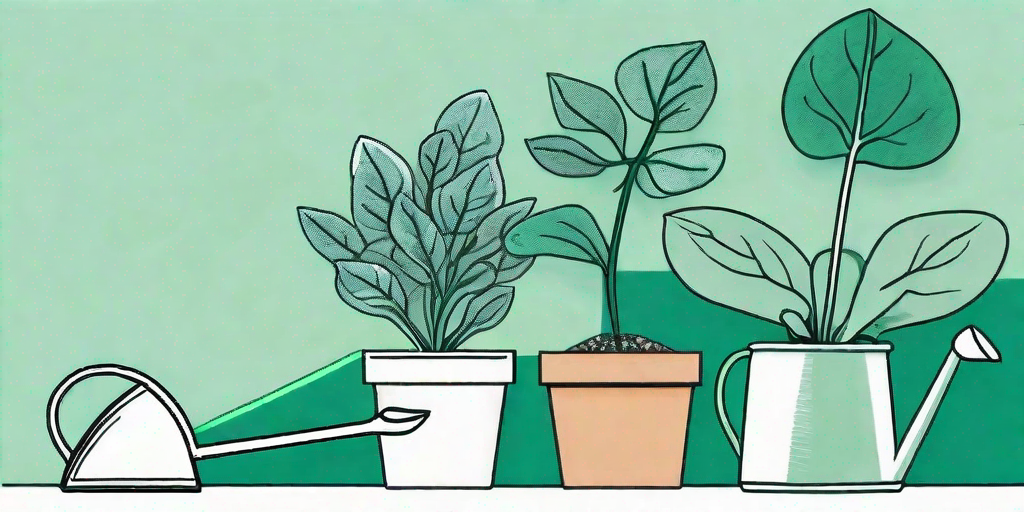
Ah, the nerve plant. A plant with a name that sounds like it could be a superhero in the botanical world. But alas, it is not invincible. If you're reading this, chances are your nerve plant is looking a little...well, nervous. But fear not, dear plant parent, for we have the tips and tricks to bring your leafy friend back to life. So, roll up your sleeves, put on your gardening gloves, and let's get to work.
Understanding Your Nerve Plant
Before we dive into the nitty-gritty of plant revival, it's important to understand what makes your nerve plant tick. Or photosynthesize, as the case may be. The nerve plant, or Fittonia albivenis, is a tropical plant native to South America. It's known for its striking leaves, which are veined with contrasting colors. But as beautiful as it is, the nerve plant can be a bit of a drama queen when it comes to care.
It loves high humidity, indirect light, and well-drained soil. Too much or too little of any of these, and your nerve plant may start to throw a fit. But don't worry, it's not you, it's them. Or rather, it's their natural habitat. Understanding this can help you provide the best care for your plant and, in turn, help it thrive.
Signs of a Struggling Nerve Plant
So, how do you know if your nerve plant is in distress? Well, it's not going to send you a text message, that's for sure. But it will show signs. Wilted or yellowing leaves, slow growth, and leaf drop are all signs that your nerve plant is not happy.
But don't panic! These signs are your plant's way of communicating with you. It's like Morse code, but for plants. And with a little detective work, you can figure out what your plant needs and bring it back to health.
Reviving Your Nerve Plant: A Step-by-Step Guide
Alright, now that we've covered the basics, let's get to the good stuff. Here's a step-by-step guide to reviving your nerve plant.
Step 1: Assess the Situation
First things first, take a good look at your plant. Are the leaves yellow? Are they wilting? Has growth slowed down? These are all signs that something is amiss. But don't worry, we're about to get to the bottom of it.
Next, check the soil. Is it too dry? Too wet? The nerve plant likes its soil to be just right - not too dry, not too wet. If the soil is too dry, it could be causing your plant to wilt. If it's too wet, it could be causing root rot. Both of these conditions can be fixed, so don't lose hope just yet.
Step 2: Adjust the Environment
Once you've assessed the situation, it's time to make some changes. If the soil is too dry, give your plant a good watering. But be careful not to overdo it. Remember, the nerve plant doesn't like to have wet feet.
If the soil is too wet, you may need to repot your plant in fresh, well-draining soil. And while you're at it, check for any signs of root rot. If you see any, remove the affected roots and treat the remaining roots with a fungicide before repotting.
Step 3: Monitor and Adjust
After you've made the necessary adjustments, keep a close eye on your plant. It may take some time for it to bounce back, but with a little patience and care, it will.
If you notice any new signs of distress, don't be afraid to reassess and adjust as necessary. Remember, plant care is not a one-size-fits-all situation. Each plant is unique and may require different care.
Preventing Future Problems
Now that you've revived your nerve plant, you'll want to prevent future problems. Here are some tips to keep your nerve plant happy and healthy.
Provide the Right Environment
Remember, the nerve plant is a tropical plant. It loves high humidity, indirect light, and well-drained soil. Try to mimic these conditions as closely as possible in your home.
If you live in a dry climate, consider getting a humidifier. If your home doesn't get a lot of natural light, consider getting a grow light. And always make sure your plant is in well-draining soil.
Water Wisely
When it comes to watering, the nerve plant can be a bit finicky. It doesn't like to be too dry or too wet. Try to keep the soil consistently moist, but not waterlogged.
A good rule of thumb is to water when the top inch of soil is dry. And always make sure to use a pot with drainage holes to prevent water from sitting in the bottom of the pot.
Frequently Asked Questions
Why are the leaves on my nerve plant wilting?
Wilting leaves are usually a sign of under-watering. If the soil is dry, give your plant a good watering and it should perk up.
Why are the leaves on my nerve plant turning yellow?
Yellow leaves can be a sign of over-watering or poor drainage. Check the soil and adjust as necessary.
Can I propagate my nerve plant?
Absolutely! Nerve plants are easy to propagate. Simply cut a stem with a few leaves, place it in water, and wait for roots to grow.
Conclusion
There you have it, folks. A comprehensive guide to reviving your nerve plant. With a little understanding, care, and patience, your nerve plant can bounce back from almost anything. So don't give up on your leafy friend just yet. After all, everyone deserves a second chance, right?















